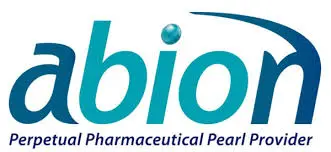With the global rise of K-beauty, the cosmetics industry continues to grow steadily. Since the ban on animal testing for cosmetics in Korea in 2017, various alternative testing methods have been adopted. However, many of these approaches have limitations in replicating the complexity of human skin physiology. The emergence of skin organoids has provided a breakthrough, enabling more accurate and diverse efficacy evaluations, particularly in areas such as hair growth,...

Traditional microscopy methods often require fluorescent labeling to analyze cellular structures, which can be time-consuming and invasive. In contrast, our HT-X1 system allows for high-resolution visualization of cellular morphology without the need for any labeling, offering a clear advantage in live-cell imaging. To validate this capability, we conducted an organoid-based analysis using intestinal organoids. Among various organoid types, intestinal organoids are known to closely replicate the functional structure of the...

Traditional protein analysis has primarily focused on quantifying expression levels within tissue samples. However, recent advances in spatial analysis techniques have shifted attention toward evaluating not only expression levels, but also the spatial distribution, density, and proximity between proteins. While this approach is already widely adopted in international research, it remains relatively underutilized in Korea, making it challenging to apply in domestic studies. Thanks to Lambda Biologics, which became the...

Among the many fermented foods we consume, kimchi is particularly known for containing a diverse range of lactic acid bacteria, which are believed to influence the activation of immune cells in the body. In our research institute, we successfully isolated a bacterial strain that appears to enhance immune cell function. To evaluate its effect in the intestinal environment, we utilized the ODISEI-Gut platform. Using this platform, we investigated how the...
We conducted a study focused on identifying disease-related markers using patient-derived tissue samples. However, traditional methods limited our ability to analyze multiple candidate markers simultaneously, and the limited availability of clinical samples posed a consistent challenge. By utilizing Lambda Biologics’ Multiplex Marker Analysis service, we were able to detect the expression of 31 markers on a single slide, enabling more comprehensive analysis while conserving precious tissue samples. This significantly enhanced...
Gastric cancer is one of the leading causes of cancer-related mortality worldwide. It is a malignant solid tumor characterized by poor prognosis due to difficulties in early diagnosis and its rapid progression. Unlike many other solid tumors that primarily metastasize via lymphatic or hematogenous routes, gastric cancer most commonly spreads through the peritoneum. Peritoneal metastasis is associated with particularly poor outcomes and marked resistance to treatment, highlighting the urgent need...

Breast cancer is one of the most commonly diagnosed cancers among women worldwide. It is a complex and heterogeneous disease, with its progression and treatment response varying significantly depending on factors such as hormone receptor status, HER2 expression, and genetic background. Breast cancer is typically classified based on the expression of three major biomarkers: estrogen receptors (ER), progesterone receptors (PR), and HER2. Among these, tumors that do not express any...

Gastric cancer is one of the leading causes of cancer-related mortality worldwide. It is a malignant solid tumor characterized by poor prognosis due to difficulties in early diagnosis and its rapid progression. Unlike many other solid tumors that primarily metastasize via lymphatic or hematogenous routes, gastric cancer most commonly spreads through the peritoneum. Peritoneal metastasis is associated with particularly poor outcomes and marked resistance to treatment, highlighting the urgent need...

Our newly developed drug differs from previously known therapeutics in that it directly penetrates various tumor tissues to exert its efficacy. Therefore, it was essential to analyze the drug’s penetration within the tumor microenvironment. To evaluate this, we conducted permeability testing in a co-culture system of tumor organoids and cancer-associated fibroblasts (CAF). This approach allowed us to determine the optimal drug concentration required for effective therapeutic action. As a result,...

We have been developing products utilizing various bacterial strains and have explored multiple methods to evaluate the efficacy of our developed strains. However, due to the nature of obligate anaerobic bacteria, there were significant limitations in applying conventional in vitro efficacy evaluation methods. To overcome these challenges, we explored different testing approaches and discovered the ODISEI platform. Through this platform, we confirmed that organoids enable the effective analysis of obligate...
Cholangiocarcinoma is a cancer with no distinct early symptoms, making early detection challenging, and its exact pathogenesis remains unclear. In Western countries, it is classified as a rare cancer due to its relatively low incidence, and its symptoms vary depending on the tumor location, further complicating prevention and early diagnosis. Over the years, many clinical trials for cholangiocarcinoma treatments have faced high failure rates, resulting in a lack of globally...

Pancreatic cancer is one of the most challenging malignancies to diagnose early, as it presents few or no symptoms in its initial stages. It is also known to have the lowest survival rate among all cancers. Additionally, the tumor microenvironment (TME) of pancreatic cancer poses significant barriers to drug penetration, driving the development of innovative therapeutic strategies to overcome these challenges. To better replicate the pancreatic cancer microenvironment, we conducted...

Organoids overcome the limitations of traditional 2D cell culture models by enabling more physiologically relevant experiments in a 3D, multicellular environment. In particular, utilizing both tumor and normal organoids allows for rapid and precise evaluation of drug specificity, efficacy, and toxicity. Due to their structural similarity to actual tissues, organoids provide a more realistic platform for research. This makes them highly promising not only for drug development but also for...

Organoid has proven to be a powerful tool for human sample-based validation in the drug development process. In this study, CRC organoids were utilized to evaluate the efficacy of candidate drugs, demonstrating superior anticancer effects compared to conventional therapies. This highlights the predictive accuracy and practical applicability of organoid models. Moreover, by integrating organoid models with traditional 2D and PDX systems, the platform has established itself as an essential component...

The tumor organoid efficacy evaluation platform has proven to be an invaluable tool for assessing the anticancer potential of small molecules. Using CRC organoids to validate human POC based on existing 2D experimental data, we observed that the drug demonstrated superior anticancer effects compared to conventional therapies. What stood out the most was the platform’s ability to accurately evaluate patient-specific drug responses using patient-derived tissues. Additionally, it simplified the process...

In Thailand, cholangiocarcinoma is a prevalent disease. While many companies have traditionally relied on 2D cell models and mouse models for drug development, these approaches often face challenges in clinical Phase 3 trials, where efficacy issues rather than toxicity lead to project discontinuation. Although organoids have not yet reached the later stages of clinical application, their ability to reflect individual patient characteristics and tumor heterogeneity offers significant potential. Our recent...

Lung cancer is one of the most commonly diagnosed cancers worldwide and a leading cause of cancer-related mortality. Among its subtypes, non-small cell lung cancer (NSCLC) accounts for approximately 80–85% of all cases and demonstrates the highest response rates in the field of immunotherapy, making it a key focus for novel drug development. However, predicting drug responsiveness has been challenging due to variability between patients. Lambda Biologics’ patient-derived organoids address...

The virus platform has proven its innovative potential in developing infection models using organoids. It significantly accelerated the development of antiviral drugs and enabled precise drug evaluation in a human-like environment, which was highly impressive. Avion Research Institute achieved excellent results in efficacy validation during the drug development process using this platform....

As an expert with 20 years of experience in novel drug development, I firmly believe that tumor organoids are an innovative technology enabling accurate evaluation by comparing patient-derived cancer and normal cells. They offer significantly higher precision in drug assessment than traditional cell and animal models. Additionally, organoids allow the observation of patient-specific drug responses, making them invaluable for clinical trial design and biomarker development. Using organoid efficacy evaluations, I...
I have been utilizing tumor organoid technology since 2020. Recently, I’ve come to appreciate how combining organoid technology with AI can revolutionize the drug discovery process by enhancing efficiency and accelerating personalized therapy development. Notably, using tumor organoid models to validate AI-driven antibody therapy data has further clarified their effectiveness, and the outcomes from my recent studies have exceeded expectations....

Colorectal cancer, unlike other cancer types, is significantly influenced by dietary and lifestyle factors. Evaluating drug responsiveness based on specific genetic markers and MSI (microsatellite instability) in patients is crucial, and colorectal cancer organoids were developed to address these challenges. Using the organoids, we observed that they better simulated patient diversity compared to traditional 2D cell lines and were more convenient to use than mouse xenograft models. This approach not...

Our NK immune cell-based cancer therapy faced challenges during its development and efficacy evaluation. To address these issues, we explored various platforms and discovered the Lambda Biologics platform, which we utilized for efficacy testing. Contrary to our initial expectations, the platform provided a wealth of additional information. Beyond simply evaluating efficacy, we were able to establish optimal conditions to maximize the therapeutic potential of our NK immune cell-based therapy. Based...

COSMAX는 글로벌 화장품 업계를 선도하며, 혁신적인 원료 개발과 제품 효능 평가에 ODISEI SKIN 플랫폼을 도입하여 놀라운 결과를 경험했습니다. 이를 통해 발모, 탈모, 새치 등 신규 화장품 원료의 잠재력을 신뢰성 있게 확인하고 기존의 한계를 뛰어넘는 발전을 이루어냈습니다. 정확한 효능 검증 ODISEI SKIN 플랫폼은 기존 평가 방법이 놓칠 수 있는 피부 생리적 반응까지 정밀하게 분석할 수 있는 도구입니다. 예를 들어, 새로운 항노화 성분에서 피부 조직의 콜라겐 생성 촉진 효과를 데이터 기반으로 입증하였으며,...

Human intestinal organoids can accurately mimic the structure and function of the human intestine, making them an ideal platform for studying the early stages of organ development. The KRIBB research team not only developed the platform but also utilized it to discover a new probiotic, Lactobacillus reuteri DS0384, which has shown remarkable potential in promoting gut development and preventing diseases. Notably, this innovative research has been transferred by KRIBB to...

LambdaBiologics is supporting toxicity evaluation and efficacy verification for pet pharmaceutical products and functional foods through its innovative organoid platform, offering an alternative to animal testing. Platform Potential Proven Through Toxicity Evaluation of Pet Toothpaste LambdaBiologics organoid platform was recently utilized for the toxicity evaluation of a pet toothpaste product. Due to pets nature, these kind of toothpaste products are ought to be frequently ingested by animals, yet there is...

LambdaBiologics provides OECD-guideline-based testing services verified under GLP standards through its innovative research platform and diverse preclinical solutions. The company ensures optimal cost efficiency and performance for its clients, supporting them in meeting submission requirements for U.S. and European regulatory agencies. LambdaBiologics offers integrated services across all stages of drug development, utilizing cutting-edge research technologies, including alternative methods to animal testing. Various alternative testing approaches, such as toxicity evaluation, are...

KTR established Korea's first Animal Alternative Testing Center and has built related facilities in the biopharmaceutical sector to provide an innovative research environment. Currently, toxicity evaluations required in the drug development process are conducted through alternative testing methods, with six OECD TG experiments already implemented. In addition, a variety of alternative tests are systematically operated under GLP certification. Lambda Biologics and KTR possess collaborative infrastructure across all stages of drug...

Holotomography is a groundbreaking technology that enables high-resolution observation of dynamic changes in cells without fluorescent staining, while preserving their natural state. This technique does not interfere with the physiological changes of cells, allowing for real-time analysis of their internal structures and functions over extended periods. LEE (SNU): "Our research team utilized holotomography to observe various dynamic changes, such as cell division, migration, and death, in mouse intestinal organoids over...
